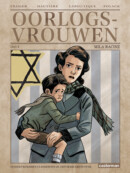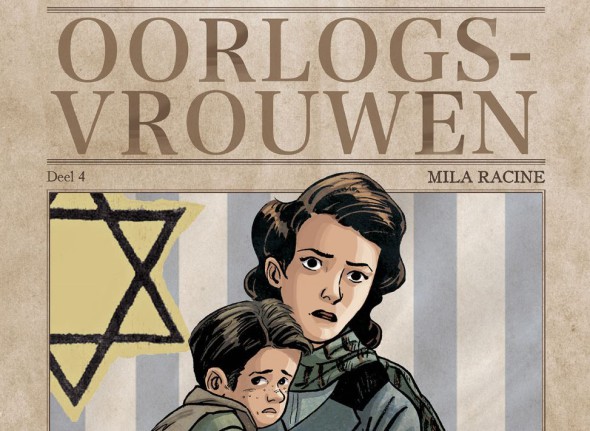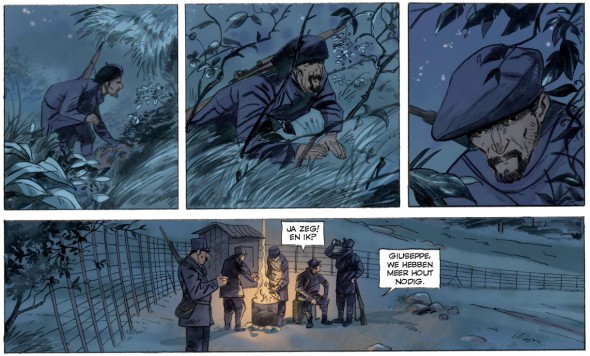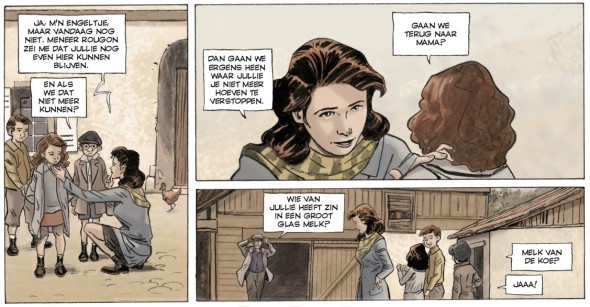
Written by: Régis Hautière, Francis Laboutique
Illustrations: Olivier Frasier
Coloring: Olivier Frasier
Publisher: Casterman
Oorlogsvrouwen Deel 4: Mila Racine – Comic Book Review
In part four of Oorlogsvrouwen, yet another extraordinary woman takes the lead. This time, it’s Mila Racine who stands in the spotlight, due to her work for the resistance in France. While many Jewish people were being deported, she, as well as the others on her team tried to save their children from the same fate as their relatives. Unfortunately, this good deed is not without danger.
A young woman inherited a diary from her aunt, which consists out of documents concerning the resistance at the border between France and Switzerland, who tried to smuggle Jewish children into Switzerland and into safety. Curious to find out more, this young woman and her husband contact some of the people who knew her aunt.
These people tell them about Mila Racine, who was part of this resistance in 1943, and accompanied many children to the border. Unfortunately, the Germans have upped their guard and it becomes more and more difficult to pass the border without being caught, and they are running out of time. What they don’t know, is that they are being watched by a woman, agent Gerda, who works for the German authorities. Nonetheless, these authorities seem to be doubting agent Gerda’s abilities, and even suspect her of collaboration with the enemy, due to her actions with Berthie Albrecht (which you can read all about in the third issue of Oorlogsvrouwen).
To bring as many young Jewish children to safety as possible, Mila and her colleagues set up one more smuggling plan. They travel with the children to Annecy by train, and from there, they will try to pass the border. Despite their careful preparations, they do get caught and from here on out, it’s a game between the Germans and the resistance. The Germans try to get as much information as they can from their prisoners, while the members of the resistance are desperately trying to find a way to get their friends released.
The story shifts quite a lot between the present and 1943, which adds an extra layer to the story, yet it also breaks the flow at times. The story in the present is just a little frame story, but the comic book could have done well without. Further, the pace is not very fast, yet constant.
There are quite a lot of characters to get to know, which sometimes makes it hard to follow, as names aren’t frequently used. Nonetheless, Régis Hautière and Francis Laboutique keep the story interesting that way. Also the fact that this comic book is based on true events and real people, gives it a totally different dimension and makes you think about what must have been going on during World War Two, as it suddenly becomes very personal this way.
Olivier Frasier’s illustrations look basic but good, and combined with the muted colors that were chosen for the illustrations, the whole creates an atmosphere of tranquility, yet with a constant threat hanging over it, suiting the story quite well.
Conclusion
Oorlogsvrouwen Deel 4: Mila Racine tells a very interesting story about the resistance in a small town at the border of France and Switzerland, who try to bring Jewish children into safety. The story is catching because it is based on true facts, yet because it is told in a frame story, the flow can’t always continue in a fluent line, which is a bit sad. Nonetheless, it’s a good story, accompanied by simple yet elegant looking illustrations that fit the whole perfectly.
Oorlogsvrouwen Deel 4: Mila Racine - Comic Book Review,







No Comments